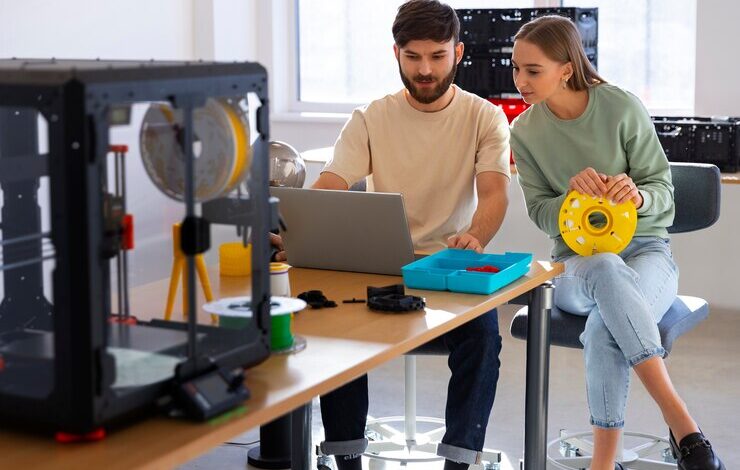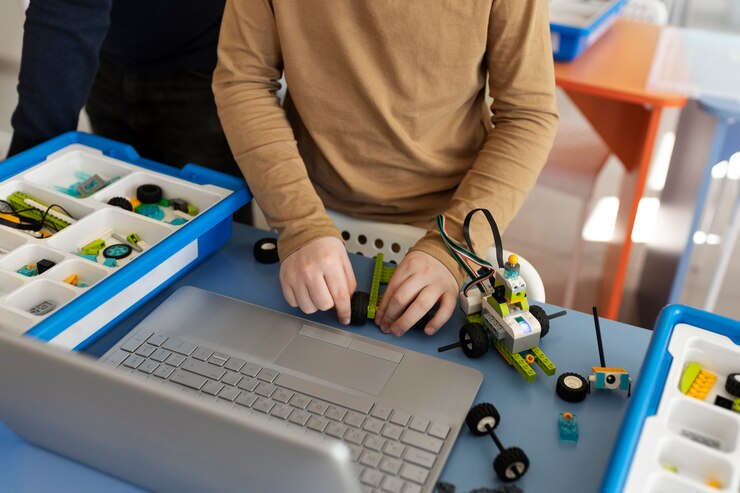The Future of Learning with Zonestar Cura Resources for 3D Printing

In the evolving landscape of education, technology plays a pivotal role in shaping how students learn and interact with the world. Among the most innovative tools in this arena is 3D printing, which brings abstract concepts to life with tangible results. For educators looking to harness this technology, the zonestar_cura_resources.zip file offers a treasure trove of resources tailored to enhance teaching methods. This blog post will guide you through understanding and utilizing these resources to enrich your educational experience.
Understanding Zonestar Cura Resources
The zonestar_cura_resources.zip file is a comprehensive package designed specifically for educators venturing into the world of 3D printing. It contains a variety of tools and guides that simplify the integration of 3D printing technology into educational settings. Whether you’re new to 3D printing or looking to optimize your current practices, this file has something for everyone.
Inside this resource pack, you’ll find detailed guides on setting up 3D printers, calibrating machines for precision, and troubleshooting common issues. Additionally, it offers lesson plans that align with various curricula, providing educators with ready-to-use resources that save time and effort. These resources ensure that educators can focus more on delivering engaging lessons rather than getting bogged down by technical details.
By leveraging these tools, educators can significantly enhance their teaching methods, offering students a dynamic and interactive learning experience. This file is more than just a technical manual; it’s a gateway to innovative education that empowers both teachers and students.
The Role of 3D Printing in Modern Education
3D printing technology is revolutionizing the way concepts are taught in classrooms. It enables educators to transform complex ideas into physical models that students can see and touch. This hands-on approach not only enhances comprehension but also fosters creativity and problem-solving skills among students.
For instance, in science classes, students can print models of molecules or ecosystems, providing a concrete visual aid to better understand these topics. In art and design courses, students can bring their creations to life, experimenting with form and function in ways that were previously impossible. The possibilities are endless, limited only by the imagination of the educator and students.
Furthermore, 3D printing promotes a collaborative learning environment. Students often work in teams to design, print, and refine models, encouraging communication and teamwork. This collaborative spirit is crucial in preparing students for real-world scenarios where teamwork and innovation are key.

Step-by-Step Guide to Using Zonestar Cura Resources
To make the most of the zonestar_cura_resources.zip, follow this straightforward guide:
- Download and Extract: Begin by downloading the file from the provided link. Once downloaded, extract the contents to a dedicated folder on your computer. This will help you easily access and organize the resources.
- Familiarize Yourself with the Contents: Open the folder to explore the various files included. You’ll find user manuals, lesson plans, and calibration tools. Take some time to go through each document to understand its purpose and how it can be applied in your classroom.
- Setup and Calibration: Follow the step-by-step guide in the file to set up your 3D printer. Proper calibration is essential for achieving accurate prints, so pay close attention to this section. The resources include detailed instructions and troubleshooting tips to help you overcome any initial setup challenges.
- Incorporate Lesson Plans: With your printer ready, start incorporating the provided lesson plans into your curriculum. These plans are designed to align with educational standards, making it easy to integrate 3D printing into your existing teaching framework. Adapt these plans to fit the specific needs and interests of your students zonestar_cura_resources.zip.
- Engage Students with Projects: Encourage students to create their own projects using the 3D printer. This hands-on approach is a great way to apply theoretical knowledge in a practical setting. Provide guidance and support as they design and print their models, fostering an environment of creativity and exploration.
Success Stories from the Classroom
Numerous educators have already embraced 3D printing with remarkable success. Consider the case of a middle school teacher who used 3D printing to enhance her biology lessons. By printing detailed models of cells, students were able to explore complex structures in a tangible way, significantly improving their understanding and retention of the material.
In another example, a high school art teacher incorporated 3D printing into his curriculum, allowing students to design and print their own sculptures. This not only encouraged artistic expression but also introduced students to new technology, sparking interest in STEM careers.
These success stories highlight the transformative power of 3D printing in education. By sharing these experiences, we hope to inspire more educators to explore the possibilities of this technology in their own classrooms.
Tips for Optimizing 3D Printing in Education
To maximize the benefits of 3D printing in your educational setting, consider the following tips:
- Start Small: Begin with simple projects and gradually introduce more complex tasks as you and your students become more comfortable with the technology.
- Encourage Collaboration: Promote teamwork by assigning group projects that require students to work together to design, print, and assemble their models zonestar_cura_resources.zip.
- Stay Updated: 3D printing technology is constantly evolving. Keep abreast of the latest developments and updates to ensure you’re making the most of the tools available.
- Integrate Across Subjects: Don’t limit 3D printing to STEM subjects. Look for opportunities to incorporate it into art, history, and even language arts to create interdisciplinary learning experiences.
The Future of 3D Printing in Education
The potential for 3D printing in education is vast and largely untapped. As technology continues to advance, its applications in the classroom will only grow. Educators who embrace this technology now will be at the forefront of innovative teaching methods, equipping students with the skills they need for the future.
In conclusion, the zonestar_cura_resources.zip file is an invaluable asset for educators seeking to enhance their teaching with 3D printing. By utilizing these resources, educators can provide students with unique learning experiences that foster creativity, collaboration, and critical thinking. We encourage you to download the file, explore its contents, and start your 3D printing journey today.
For those interested in further exploring the potential of 3D printing in education, consider reaching out to educational technology specialists or joining online communities of educators who are already integrating this technology into their classrooms. Together, we can shape the future of learning, one layer at a time.




